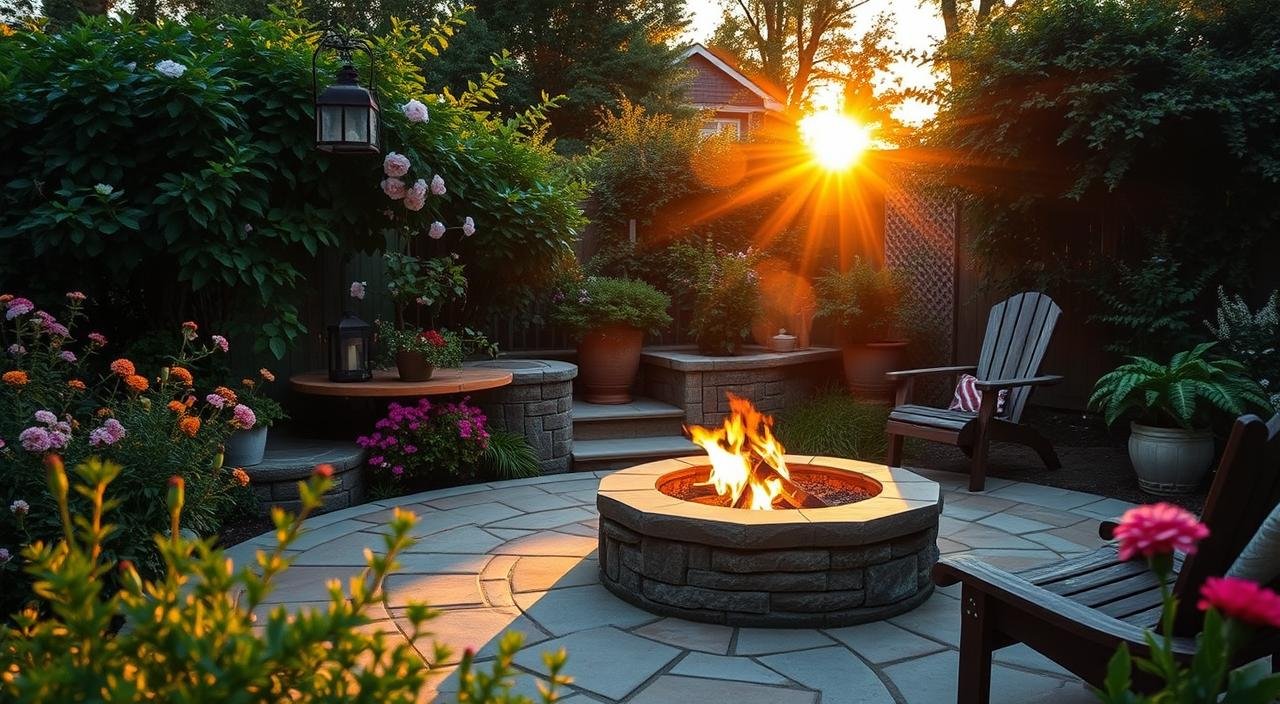Benefits of a Rain Garden: Your Guide to Eco-Friendly Landscaping
What is a Rain Garden?
So, let’s chat about rain gardens, shall we? A rain garden is pretty much a cool landscaping feature that’s all about grabbing that rainwater runoff, soaking it up, and managing it like a pro. But it’s more than just a typical garden; it’s like a superhero for stormwater management! At the end of this article, there’s a special video showing everything you should know, step by step!
Placed just right in your yard, rain gardens use native plants that absolutely love wet conditions. This makes them ideal for spots where it seems like rainwater just loves to hang out and pool up. By soaking up all that extra rainwater, these gardens not only help keep the dirt from eroding but also act like a filter, making sure nasty pollutants don’t end up in local streams and rivers.
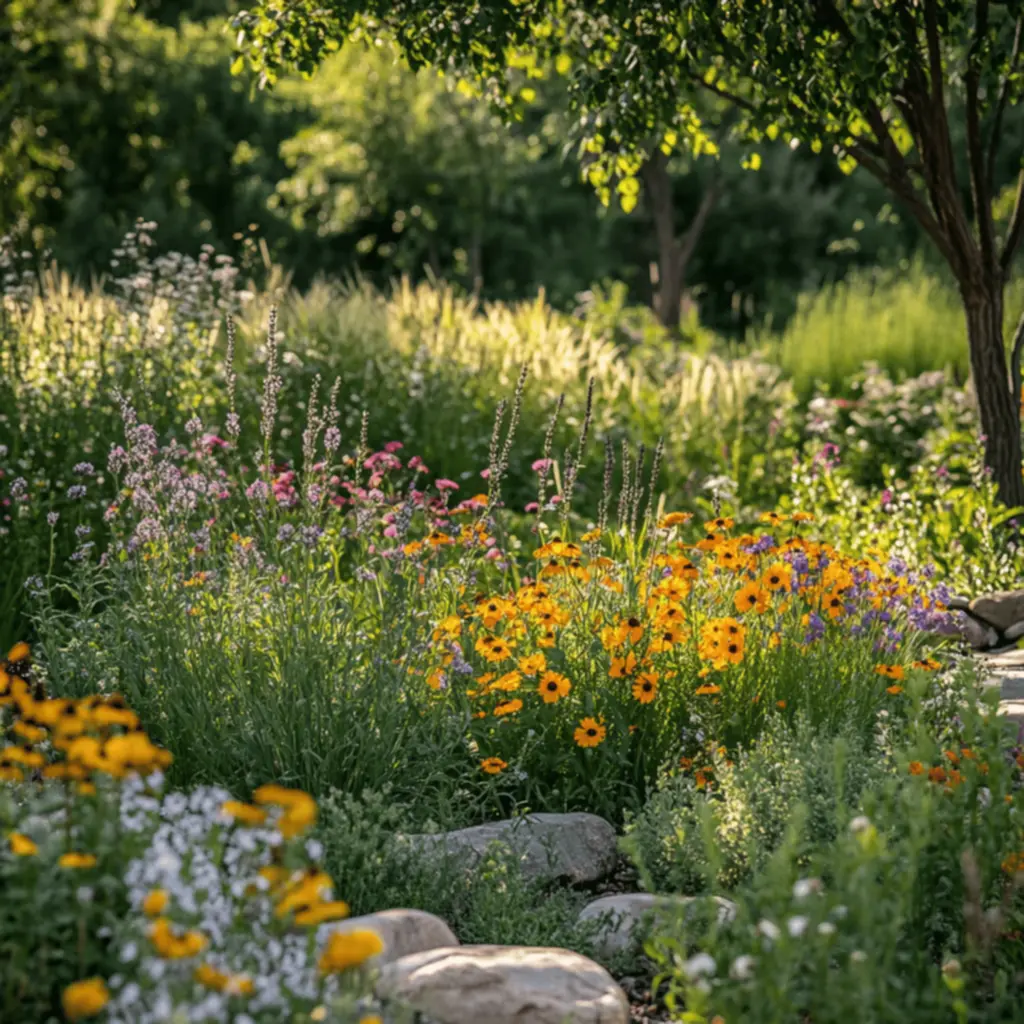
In a nutshell, having a rain garden can really boost the ecological vibe of urban and residential neighborhoods. It’s a fantastic way to help with flooding while also upping the water quality around. Honestly, the first time I got a glimpse of rain gardens, I was just floored by how something so simple could be so effective at making our surrounding environment better.
Plus, let’s be real, they look great too! Adding a bit of nature to any space is a win-win while tackling some pretty big environmental challenges we face today.
Another thing that gets me excited about rain gardens is how flexible they can be. It doesn’t matter if you’ve got a tiny city backyard or a big ol’ estate – a rain garden can be customized to fit just what you need. This means they’re not just functional, but they offer a unique, hands-on gardening adventure!
Benefits of Installing a Rain Garden
Now, let’s dive into why putting in a rain garden can be a real game-changer! First off, rain gardens play a hefty role in managing stormwater. They’re like sponges for runoff, helping to prevent flooding and keeping your soil and plants nice and safe. This is super important in urban spots where there are plenty of hard surfaces, and all that extra rain can cause some serious soggy messes.
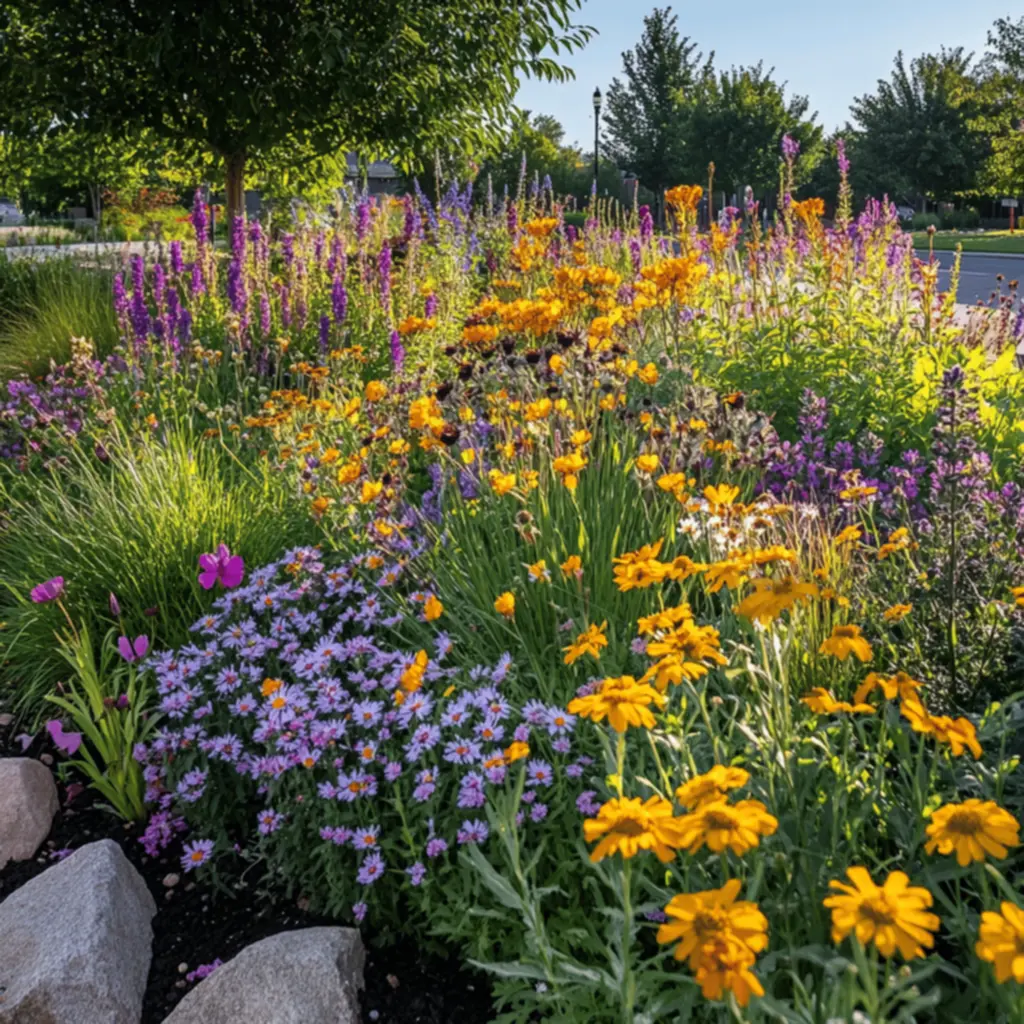
And there’s more! Rain gardens actually help clean up water quality too. As rainwater trickles through the soil and zips around plant roots, it naturally filters out nasty stuff like chemicals and muck.
So when that water gets filtered back into the groundwater, it’s way cleaner and way better for the local ecosystems. I can’t tell you how satisfying it feels to know you’re helping improve the water quality in your neighborhood with a rain garden!
Let’s not forget about the wildlife! When you set up a rain garden, you’re not just creating a pretty space; you’re also welcoming a host of different critters – think bees, butterflies, and even birds.
By using native plants, you’re not only helping your local plant life flourish but also maintaining a balanced ecosystem. I just find it delightful to have such a lively environment right in my own backyard!
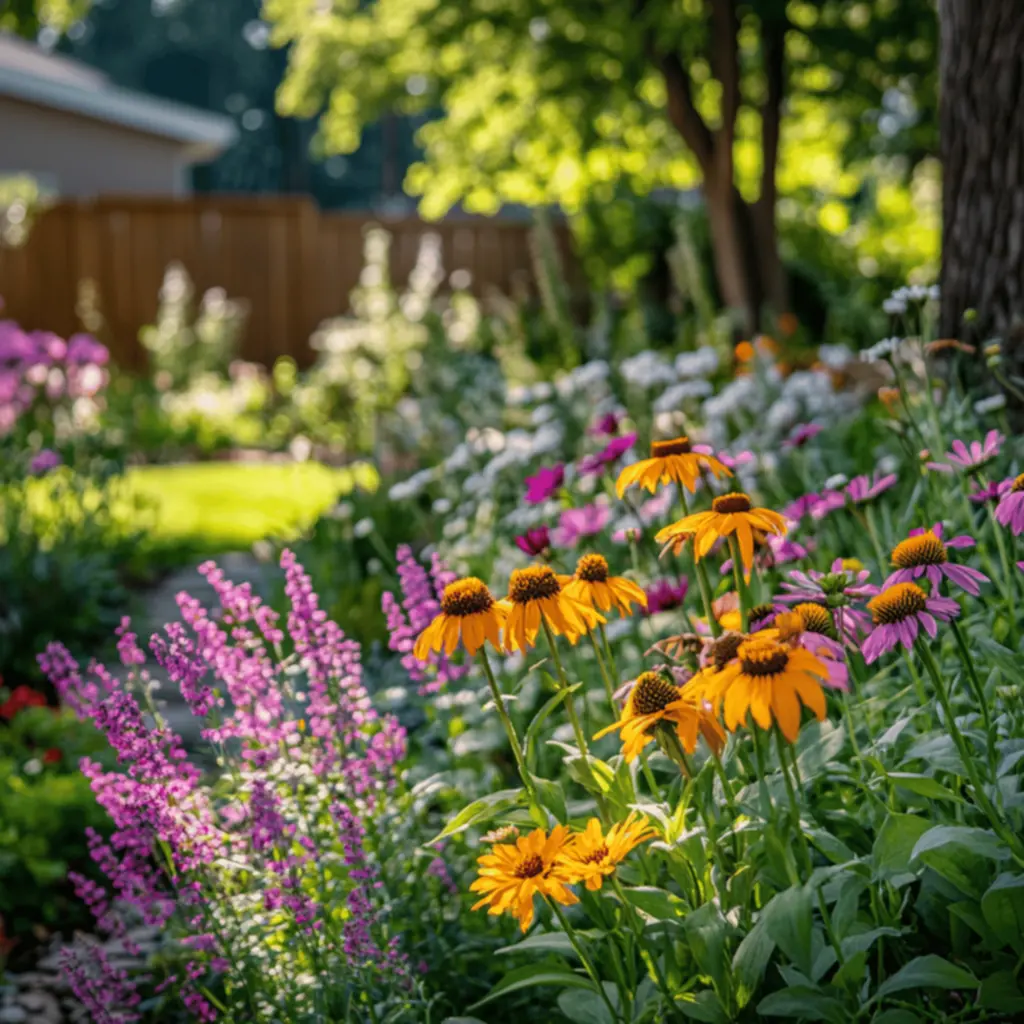
Oh, and if you’re thinking about property value, here’s a bonus: rain gardens can actually boost it! They’re unique features that potential buyers might get excited about, especially with the growing interest in green living. So, not only do you gain beauty and practicality, but you also make a smart investment for the future!
How Rain Gardens Work: Understanding Stormwater Management
Alright, so let’s break down how rain gardens do their thing when it comes to stormwater. The whole idea is designed around managing that pesky stormwater runoff. When it rains, water rushes off things like roofs, driveways, and sidewalks.
If we don’t handle this right, all that extra water can trigger serious erosion, overload storm drains, and pollute our lovely waterways. But fear not! Rain gardens are here to catch and manage this runoff with a natural filtration method!
As soon as water flows into a rain garden, it sits in a shallow dip where the soil and plants work their magic. The makeup of the soil is super important here; it should retain just enough moisture while allowing extra water to run off. The plants you choose are crucial since they’ll help absorb that rainfall, making good use of all that water.
Getting to know how rain gardens function can really empower you to create a more sustainable home. Not only do they reduce your reliance on city stormwater systems, but they’re also a proactive way to manage that water flow in your yard. Understanding stormwater management opens up a world of benefits rain gardens bring to the table.
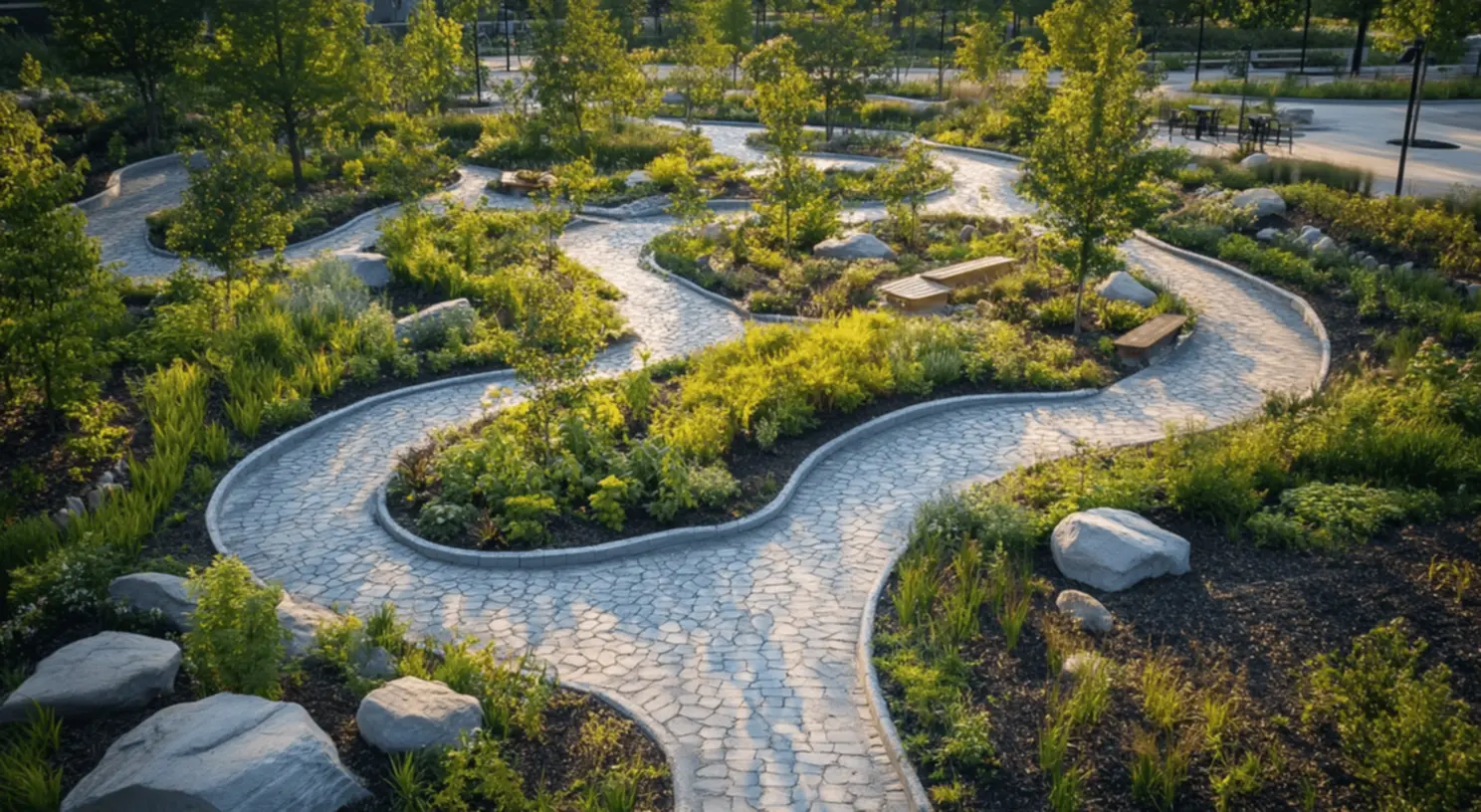
Plus, rain gardens contribute to groundwater recharge. This means that the rainwater eventually gets filtered and returns to the groundwater table, encouraging a healthier ecosystem all around. Every rain garden acts like a mini w watershed, playing a vital role in overall environmental health.
Choosing the Right Location for Your Rain Garden
Now, picking the right spot for your rain garden is super crucial! You wanna start by checking out how water flows naturally on your property. A rain garden should really go where runoff tends to gather, like near downspouts or in those low spots you might have noticed. Placing it strategically ensures maximum efficiency in capturing all that stormwater.
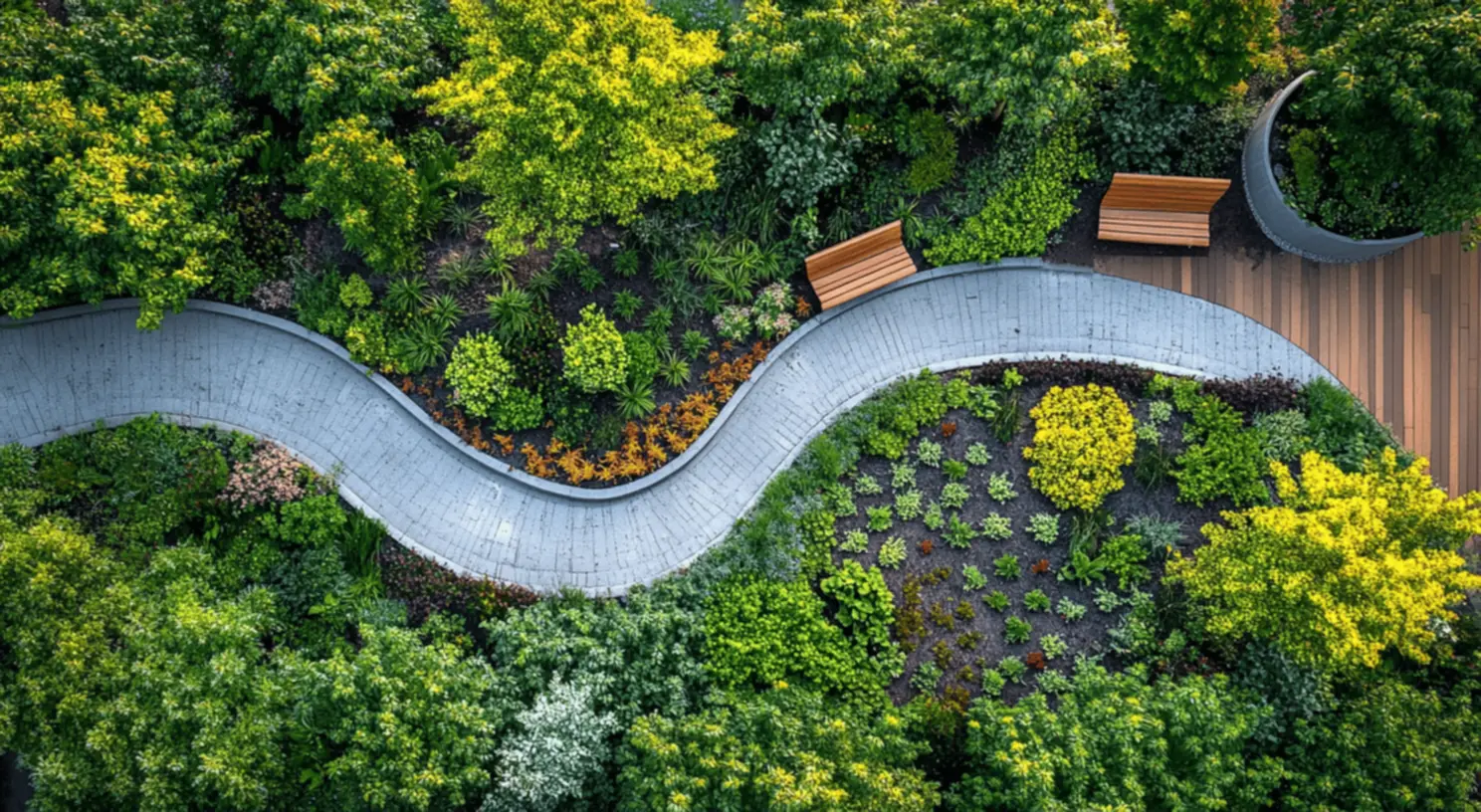
And hey, don’t forget about the distance from your house and other structures. A good rule of thumb? Keep it at least ten feet away from your home’s foundation to dodge any potential water damage issues. Understanding your property’s layout will help you choose the most effective spot while also giving your garden its best chance to thrive.
Another thing to think about is sunlight exposure! Most native plants love soaking up at least half a day of sunshine. So, make sure your chosen location can deliver the rays your plants need to stay healthy and strong. It’s a smart idea to check out the site at different times during the day to really nail down the sunlight patterns before you get to planting.
One last thing: pay attention to what type of soil you’ve got. Doing a simple soil test can shed light on how well your site drains. Good drainage is key for a rain garden to work, as you don’t want your plants ending up with soggy roots – that’s a bummer for growth. Finding a spot that has the right kind of soil conditions is super important for success over the long haul.
Essential Components of a Rain Garden
Alright, so when it comes to creating a rain garden, there are some essential components you gotta consider to make sure everything works smoothly. We’re talking about soil composition, drainage, and, of course, plant selection. When each of these components is thoughtfully planned out, they work together to enhance water absorption while giving you a lively environment that attracts all sorts of wildlife.
Soil Composition and Drainage
So, first up, the soil composition is key for how well your rain garden will thrive. A combination of sand, loam, and clay creates a balanced setup for your plants while ensuring proper drainage. Having soil that drains well keeps water from pooling up, reducing the chance of root rot while making sure there’s enough moisture for the plants to grow.
Thinking about enriching your soil with organic matter is also a smart move. Tossing in some compost does wonders, improving drainage and providing essential nutrients for your plants to munch on. The right soil mix can make a big difference in how well your rain garden performs as time goes on, so it’s worth putting in the effort here.
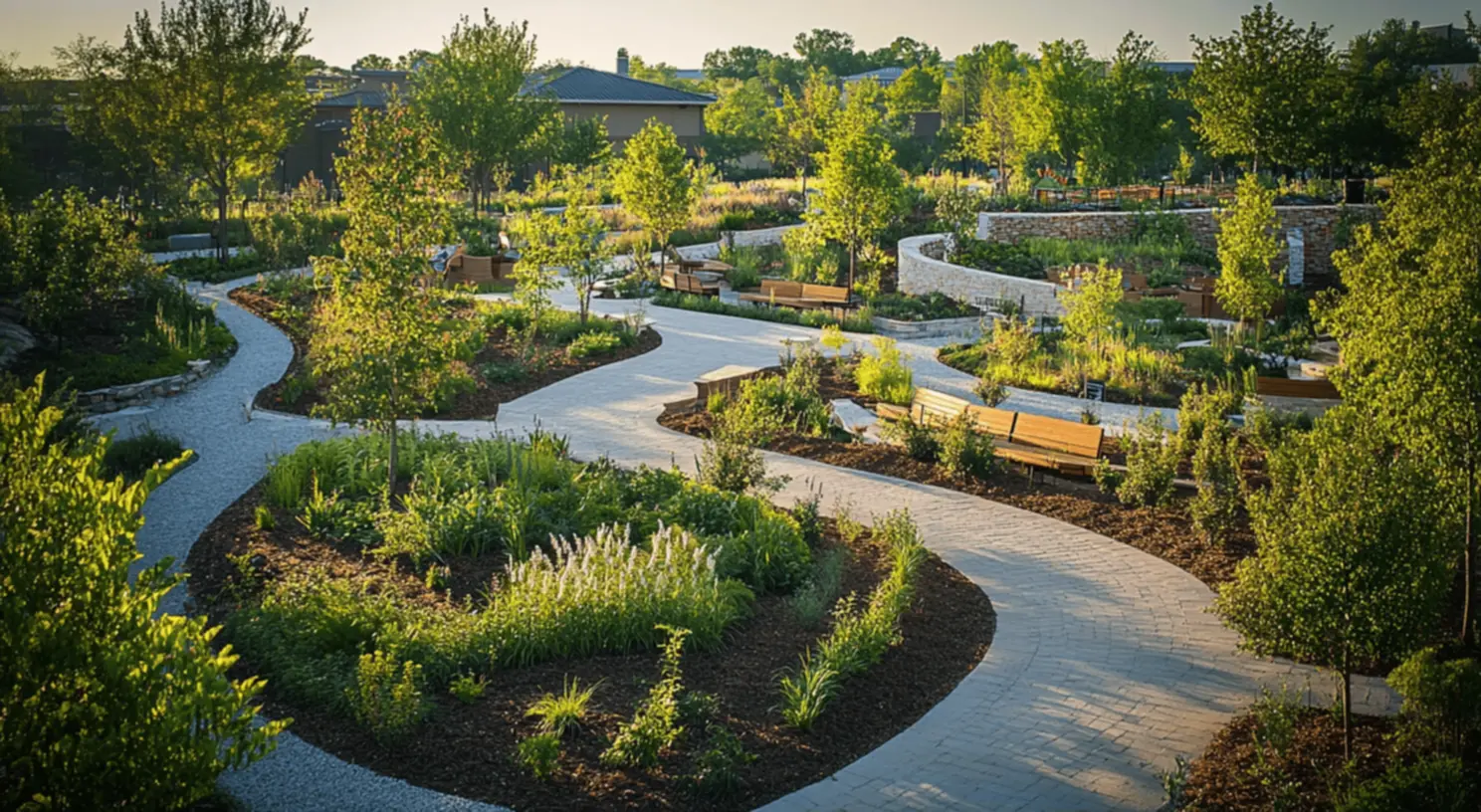
You should also keep the depth of your rain garden in mind. A solid depth of about 6 to 12 inches usually does the trick for holding water. And it helps to build your garden with a slight slope so water flows into it smoothly, maximizing its effectiveness. Knowing these little details will guide you into designing a successful rain garden!
Plant Selection: Native and Water-Absorbing Plants
Choosing the right plants is a huge deal for making your rain garden a success. Native plants, especially those that fit well with your local climate, thrive in those wet conditions and require less fuss when it comes to care. By opting for native species, you’re crafting a resilient garden that adds to regional biodiversity while supporting local wildlife.
Some of the best picks for water-absorbing plants include rushes, sedges, and wildflowers. These beauties are super good at soaking up extra water, and they bring lovely blooms and foliage to the party! Mixing different heights and colors can really uplevel the visual vibe and attract pollinators, turning your backyard into a buzzing ecosystem.
Oh, and don’t forget about those seasonal changes! When you’re picking out your plants, think about how you can create a rain garden that stays interesting all year long. I personally love shaking things up with different native plants so that my garden transforms with each changing season, making it a dynamic part of my landscape.
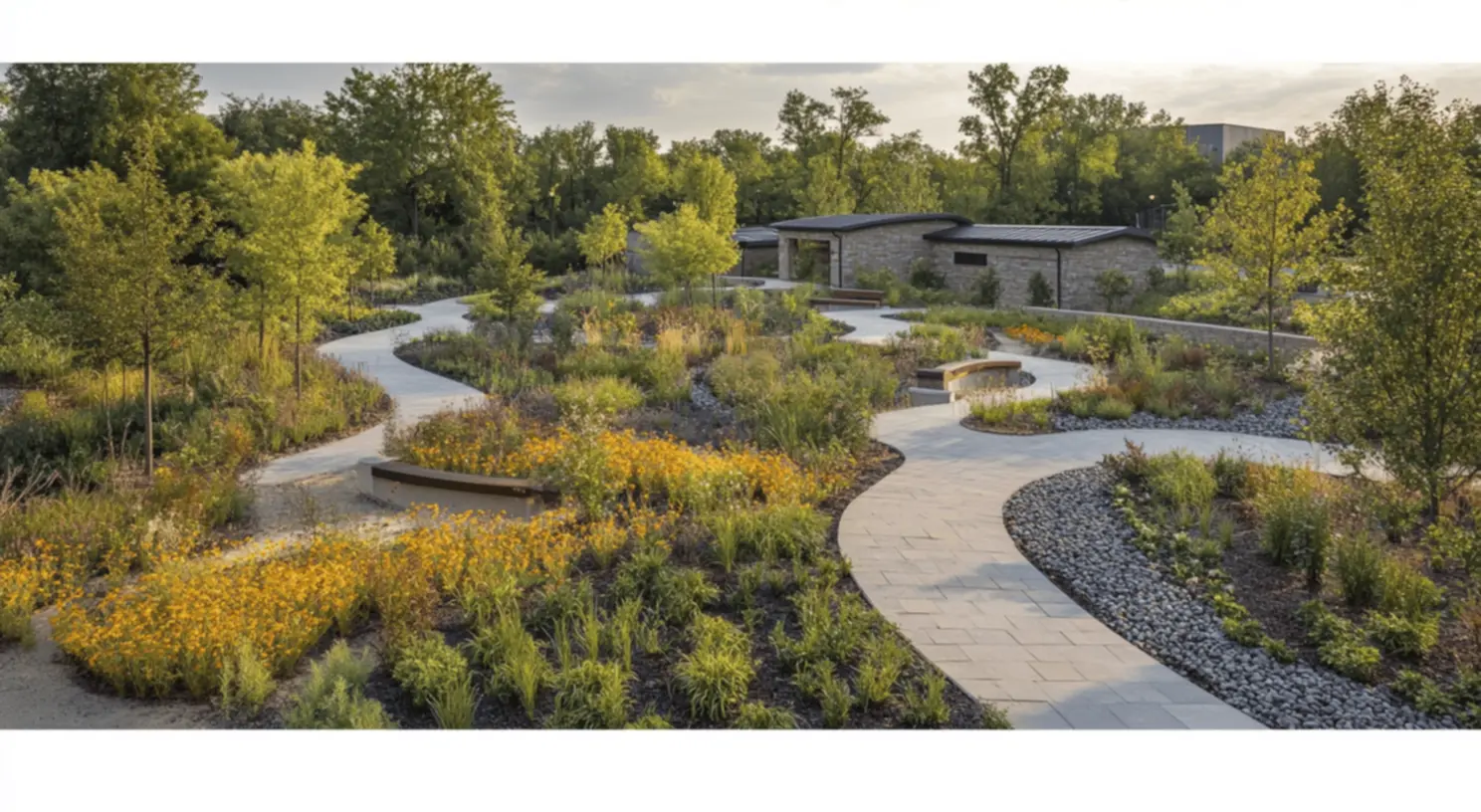
And here’s a handy tip: group your plants based on their water needs. Some of them absolutely love the wet soils, while others prefer a bit drier conditions. Creating zones in your rain garden allows you to optimize plant health and create a thriving, sustainable environment.
Step-by-Step Guide to Creating a Rain Garden
Creating your very own rain garden sounds like such a rewarding project, and hey, breaking it down into easy-to-follow steps can make it even more enjoyable! From the planning and design phase to getting those plants in the ground and keeping everything maintained, each step is super important for your success.
Planning and Design Considerations
Before you get all excited and start digging, you need to have a good plan in place for your rain garden. First off, figure out the size based on how much drainage area you’d like to manage. A handy rule of thumb here is that the garden should take up about 20% of the size of the area draining into it. This will give you enough capacity to handle the extra water like a champ!
Next up, sketch out a design that includes where your plants will go, plus any pathways or borders you might want to add. Visualizing the layout helps ensure everything flows nicely in your garden. And think about diversity – mixing up plants that bloom at different times will keep your rain garden looking attractive all year round.
While you’re designing, don’t leave out aesthetics! You can jazz things up with decorative stones, mulch, or a little fence to enhance the look of your garden. Striking a balance between how it functions, looks, and how water flows in your landscape will bring out the best in your rain garden.
Finally, be sure to gather all your materials before jumping into construction mode. You’ll need some tools for digging, soil amendments, plants, and any decorative touches you want to include. Having a solid plan and the right materials ready will help streamline everything, making your rain garden project way less overwhelming.
Excavation and Soil Preparation
Alright, so once you’ve got your plan on lock, it’s time to get digging! Start by marking out the outline of your rain garden based on your design. Using stakes and string can help you create a clear boundary, making sure it’s in the right spot to catch that runoff just right.
While you’re digging, aim for a depth of 6 to 12 inches. This gives enough room for holding water while allowing plant roots to grow happily. Just keep an eye out for any underlying roots or rocks that could mess with drainage or stunt growth – you want to avoid any hiccups down the line!
After you’ve finished the excavation, give your soil some love by mixing in organic matter like compost. This boosts the soil’s structure and makes it much better at retaining moisture. And don’t forget to level out the bottom of the garden, gently sloping it towards the center so it captures water effectively.
Consider also adding a filter fabric at the bottom of the garden before you plant. This keeps sediment from clogging the drainage and gives you a more permanent structure. Building your rain garden with these details in mind is a great way to ensure it’ll function well for years to come!
Planting Techniques and Tips
Now, the fun part – planting! Begin by laying out your plants based on your earlier design. Taller plants should go towards the back or the center where they’ll get plenty of visibility, and shorter ones can go around the edges for that lush look.
When you start digging holes for planting, make sure each hole is about twice the width of the root ball but only as deep as the root itself. This way, you’re giving roots plenty of room to spread while keeping them at the right depth. Gently loosening the roots before planting is another smart move to encourage growth.
Don’t forget to put down a nice thin layer of mulch around your plants! This helps retain moisture and keeps those pesky weeds at bay. Go for an organic mulch option that will break down over time, enriching that soil even more. And remember to give those new plants a solid drink after you’ve put them in, especially during those first few weeks as they’re settling in.
Here’s a tip from me: consider keeping a planting journal! Documenting what you planted, when, and where can make a world of difference for long-term maintenance. It’s so helpful to have a reference for the future and can enrich your gardening experience even more!
Maintenance of Rain Gardens
Taking care of your rain garden is super important for keeping it healthy and sustainable in the long run. Regular maintenance is key to making sure your plants thrive and the garden does its job managing stormwater effectively. Here are some essential maintenance tasks to keep in mind.
Watering Guidelines
In those early days after planting, consistent watering is critical for helping your plants get settled in. Make it a habit to check the soil moisture regularly – especially during dry times. Water deeply but infrequently to promote strong root growth. Once those plants are nice and established, they’ll generally need a lot less water.
Keep an eye on what happens during heavy rainfall too! If you’re finding water is pooling longer than expected, it might indicate some drainage issues. Keeping tabs on this ensures that roots stay healthy and don’t end up sitting in soggy soil. By understanding how your garden responds to different weather conditions, you’ll be able to adapt your care accordingly.
As seasons shift, pay attention to which plants do well and which ones struggle. Adjusting your watering routine as needed can make a world of difference. Recognizing that different plants have different water needs means you can be proactive and keep your rain garden in tip-top shape!
Weeding and Mulching
Weeding is also a must to keep your rain garden healthy. Even though you’ve chosen native plants that should thrive, pesky invasive plants can sneak in and fight for resources. I usually check for weeds at least every couple of weeks during the growing season to keep them under control.
On top of weeding, refreshing your mulch is important for keeping the soil moisture in check and preventing weeds from taking over. Every spring, I add a fresh layer of organic mulch to keep my garden looking sharp and vibrant. This practice not only improves the looks but helps keep the soil healthier too as the mulch breaks down over time.
Don’t forget to keep an eye on plant growth as well. Pruning back any overgrown plants helps to support healthier overall growth and keeps things balanced in the garden. There’s something beautiful about variety, so make sure to maintain that diversity in your rain garden!
Lastly, remember that gardens change over time. Not everything will thrive, and that’s okay! If you notice particular plants not making it, be open to replacing them. Keeping a flexible mindset will allow you to adapt and enjoy a flourishing and lively outdoor space.
Common Challenges and Solutions in Rain Garden Construction
Creating a rain garden can have its fair share of challenges, but being aware of potential issues can help you tackle them head-on. Some common hurdles include poor drainage, pest problems, and plant failures. If you can anticipate these hiccups, your gardening journey will be a whole lot smoother.
For example, if you spot water pooling more than you expected, that might mean your soil isn’t draining as it should. To fix this, think about adding organic matter or improving the soil structure. Sometimes simply tweaking the shape of your garden can help with water flow too!
Pests can also become an annoyance in any garden, but you can encourage natural predators like birds or beneficial insects to help keep those pesky ones in check. Plus, following good gardening practices, like proper spacing and watering techniques, can significantly reduce pest problems too.
Finally, if you’re seeing plant failures, it could stem from overwatering, poor soil conditions, or choosing the wrong plants. Keeping a watchful eye allows you to catch these issues early. If a specific plant isn’t thriving, consider whether it’s a good fit for the unique conditions in your garden. Making those adjustments will help keep your rain garden vibrant and healthy.
The trick to overcoming these challenges lies in observation and being open to learning. The more comfortable you become with managing your rain garden, the more rewarding the whole experience will be. Treat any bumps in the road as opportunities to grow, both literally and figuratively, and you’ll cultivate an amazing outdoor environment.
Incorporating Rain Gardens into Urban Landscapes
Rain gardens are popping up more and more in urban areas, and it’s easy to see why. They’re super effective tools for managing stormwater in places where everything is developed. Cities can get really congested with hard surfaces, and rain gardens offer an elegant solution to tackle flooding and water pollution, making our urban spaces way more resilient.
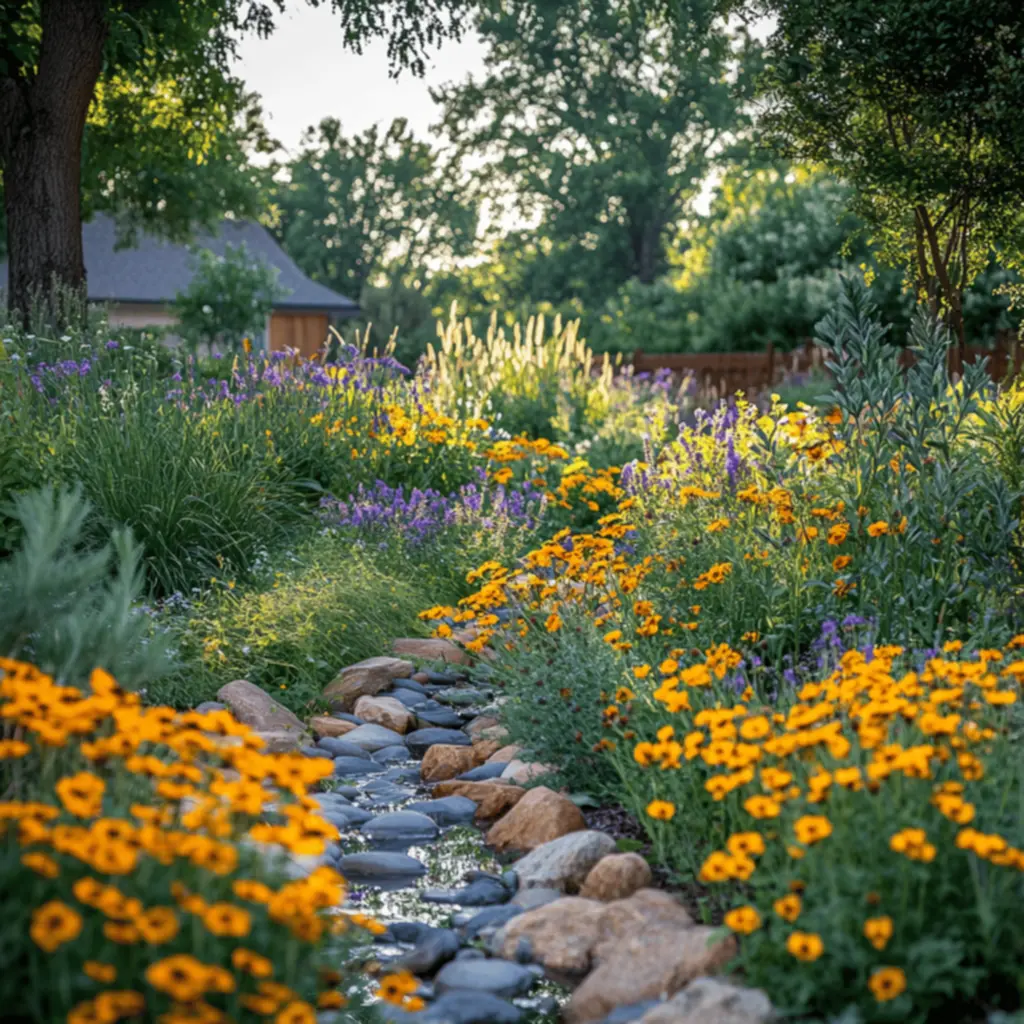
Integrating rain gardens into city landscapes not only serves a functional purpose but also elevates the look of the place. As green spaces become rarer, these gardens provide a much-needed slice of nature amid all the hustle and bustle. They beautify and transform the environment while inviting wildlife to come join, thus enhancing biodiversity in urban settings.
Plus, rain gardens can be designed to complement existing features like park pathways or community centers. Creating public rain gardens means communities can teach everyone about stormwater management and sustainable practices. Residents can enjoy the beauty and learn valuable environmental lessons at the same time!
It really excites me to see cities starting to recognize the value of green infrastructure. Rain gardens show a solid commitment to sustainability and can even help shape a cultural identity centered around eco-friendliness. Integrating these gardens into urban designs ultimately paves the way for healthier and more vibrant cities.
Case Studies: Successful Rain Garden Projects
Let’s dive into some real-life examples of successful rain garden projects that can inspire you on your own gardening journey. Many cities and communities have embraced rain gardens as effective ways to manage urban water challenges, and some notable projects really showcase the potential these gardens have.
Take Seattle, for example. This city has incorporated numerous rain gardens into public spaces, leading to significant improvements in stormwater management while promoting biodiversity. Their efforts are a fantastic example for other cities looking to bring green infrastructure into play. Neighborhoods have reported reduced flooding and enhanced green spaces, showing that a concerted effort pays off!
In suburban areas, community-led rain garden initiatives also shine. It’s pretty awesome to see neighborhoods banding together to create shared rain gardens, improving both aesthetic appeal and stormwater management for everyone involved. These collaborative projects foster a sense of community while inspiring a shared responsibility for protecting the environment.
Schools are getting in on the action too, adopting rain gardens as living classrooms. Students get hands-on lessons in ecology and environmental stewardship – talk about impactful learning! These educational gardens not only serve an essential function but also create future generations who care deeply about the environment.
Looking at these case studies can ignite your enthusiasm for rain gardens. The possibilities are limitless, and community engagement can lead to stunning transformations in urban spaces. Let these examples motivate you to create your very own sustainable oasis!
How Rain Gardens Support Biodiversity
Let’s chat about the bigger picture here: rain gardens are more than just useful landscaping features – they’re thriving ecosystems that play a direct role in supporting local biodiversity. By filling these gardens with native plants, we create inviting habitats for all sorts of wildlife, including insects, birds, and small mammals.
The local critters depend on the range of plants that provide them with food and shelter. The busy bees and fluttering butterflies that visit your rain garden help with pollination, cultivating beautiful relationships between plants and their surroundings. In this way, rain gardens enhance the overall ecological health of your property.
And there’s another cool aspect to supporting biodiversity through rain gardens: resilience! Diverse plant populations show greater adaptability when it comes to pests, diseases, and changes in climate. This biological diversity keeps your garden healthier for longer, leading to sustainable success over time.
Being part of a thriving ecosystem is such a rewarding experience. Every time I see butterflies dancing around or hear birds singing in my rain garden, I feel a connection to something bigger than myself. Nurturing biodiversity really does add a rich layer of satisfaction to all that hard work you put in!
Rain Gardens and Their Role in Climate Resilience
Finally, let’s not overlook how crucial rain gardens are in terms of enhancing climate resilience. With climate change throwing curveballs our way, these gardens help manage stormwater, lessen urban heat, and combat flooding effects. They’re slowly but surely becoming a must-have feature for sustainable landscaping.
By capturing and filtering rainwater, rain gardens do a bang-up job of absorbing excess runoff. Otherwise, that runoff would lead to flooding and erosion. Their ability to manage stormwater effectively keeps both properties and waterways protected from pollution and degradation. Especially during those weather extremes, these gardens might just save the day for urban infrastructure.

Plus, rain gardens help cool things down, tackling the urban heat island effect. That greenery doesn’t just look good – it actually helps chill the air and reduce energy consumption for cooling in nearby buildings. As cities grow and temperatures keep on climbing, rain gardens become invaluable allies in creating cooler urban environments.
So, as we face the challenges that climate change brings, incorporating rain gardens into landscape design stands out as a proactive way to amp up resilience. Creating your own rain garden is not only about beautifying your space; it’s also about making a positive impact in the big picture of environmental health.
Resources for Further Learning About Rain Gardens
If you’re feeling inspired to dive deeper into the world of rain gardens, there are plenty of resources out there waiting just for you. These guidebooks can provide a wealth of knowledge to help you plan, design, and maintain fantastic rain gardens.
First things first: check out organizations like the National Wildlife Federation or local conservation agencies. They often have resources that include guidance on plant selection, design tips, and more. Many of these entities even offer plant databases tailored to your region, making it easier to choose the right native plants for your unique area.
Books on sustainable landscaping and native gardening are gold mines for this kind of information. Titles that specifically focus on rain gardens dig into techniques, plant choices, and showcase real-life examples for inspiration. I totally recommend finding some books that pair practical advice with stunning visuals to motivate you.
Lastly, don’t overlook local gardening clubs and workshops! These are fantastic ways to meet others who share your interest in rain gardens, sharing knowledge and experiences. Even online forums or social media groups can be great platforms for exchanging tips, advice, and cultivating a community around rain gardening.
Remember, your journey in creating a rain garden is a never-ending learning process. Embrace the resources available to you, and let your curiosity guide you to create a lush, thriving landscape.
| Component | Description | Benefits |
|---|---|---|
| Soil Composition | A mix of sand, loam, and clay that supports drainage and nutrient retention. | Promotes healthy plant growth and reduces root rot. |
| Drainage | Allows excess water to flow through while retaining enough moisture. | Prevents flooding and maintains healthy plant roots. |
| Plant Selection | Choosing native and water-absorbing plants suitable for your local ecosystem. | Supports biodiversity and attracts wildlife. |

